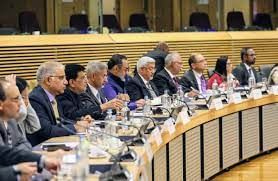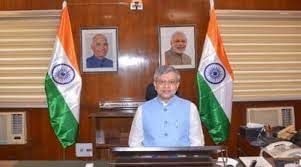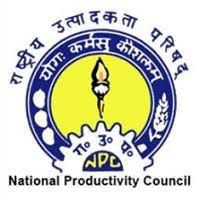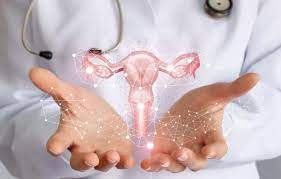UPSC Daily Current Affairs- 18th May 2023 | Current Affairs & Hindu Analysis: Daily, Weekly & Monthly PDF Download
GS-I
India-EU discuss ways to resolve Carbon Border Tax

Why in News?
The EU and India are working to resolve a trade issue related to the EU’s Carbon Border Adjustment Mechanism (CBAM).
Why such move?
- The EU is India’s second-largest trading partner and export market.
- India has expressed confidence that the intention behind CBAM was not to create a trade barrier but to promote sustainability.
- CBAM has potential impact on India’s Steel and Aluminum sectors.
Carbon Border Adjustment Mechanism (CBAM)
Proposed by | European Union (EU) |
Purpose | To reduce carbon emissions from imported goods and prevent competitive disadvantage against countries with weaker environmental regulations |
Objectives | Reduce carbon emissions from imported goods Promote a level playing field between the EU and its trading partners Protect EU companies that have invested in green technologies |
How does CBAM work?
Coverage | Applies to imported goods that are carbon-intensive |
Integration | Covered by the EU’s Emissions Trading System (ETS), which currently covers industries like power generation, steel, and cement |
Implementation | CBAM taxes would be imposed on the carbon content of imported goods at the border, and the tax rates would be based on the carbon price in the EU ETS |
Exemptions | Possible exemptions for countries that have implemented comparable carbon pricing systems |
Revenue Use | Revenue generated from CBAM taxes could be used to fund the EU’s climate objectives, such as financing climate-friendly investments and supporting developing countries’ climate efforts |
Who will be affected by CBAM?
| Details | |
Countries | Non-EU countries, including India, that export carbon-intensive goods to the EU |
Items | Initially covers iron and steel, cement, aluminium, fertilisers, and electric energy production |
Expansion | The scope of the CBAM may expand to other sectors in the future |
Advantages offered
- Encourages non-EU countries to adopt more stringent environmental regulations, reducing global carbon emissions.
- Prevents carbon leakage by discouraging companies from relocating to countries with weaker environmental regulations.
- Generates revenue that could be used to support EU climate policies.
Challenges with CBAM
- Difficulty in accurately measuring the carbon emissions of imported goods, especially for countries without comprehensive carbon accounting systems.
- Potential for trade tensions with the EU’s trading partners, especially if other countries implement retaliatory measures.
Ways to ease impact of CBAM
To minimize the impact of CBAM, India can consider several actions:
- Set up a carbon trading mechanism: To reflect the level of development and adjust the carbon tax paid domestically when paying CBT to the EU.
- Re-designate taxes on essential products: Make these as carbon taxes, which could help lower the net impact of CBT.
- Create a cadre of energy auditors: To ensure fair assessment of carbon emissions for products and help the industry calculate carbon intensity and adopt cleaner technologies.
- Start an industry awareness program: To educate sectors affected by CBT and create a dedicated group involving government, industry associations, and researchers.
- Devise a WTO-compatible retaliation mechanism: To counter CBT, considering that developing countries exporting to developed nations will also suffer from it.
- Sign new Free Trade Agreements (FTAs): After resolving the CBT issue, as high CBT would undermine the benefits of zero import duties.
- Expose the perceived hypocrisy: Utilize global platforms to expose offshoring pollution of developed countries and proposing to tax imports, while not addressing their own consumption patterns.
Conclusion
- The CBAM is a proposed policy by the EU to reduce carbon emissions from imported goods and to promote a level playing field between the EU and its trading partners.
- Although the CBAM has its challenges, it has the potential to incentivize non-EU countries to adopt more stringent environmental regulations and reduce global carbon emissions.
Source: The Hindu
River Mandovi/Mahadayi Water Dispute

Why in News?
Goans are worried after the Central Water Commission (CWC) approved the Detailed Project Report (DPR) for Karnataka’s Kalasa Bhandura canal to divert water from the upper reaches of Mahadayi to the Malaprabha basin.
About Mahadayi river:
- Origin: Mahadayi river rises in the Western Ghats, from the Bhimgad Wildlife Sanctuary in Belagavi district, Karnataka.
- The river travels 35 km in Karnataka; 82 km in Goa before joining the Arabian Sea at Panji (North-Goa).
- Also called Mandovi in Goa, Mahadayi is a rain-fed river that is shared between Karnataka and Goa for their water needs.
- The Salim Ali Bird Sanctuary is located on the island of Chorao in the Mandovi river.
- Major Tributaries: Kalasa Nala, Banduri Nala, Surla Nala, Haltar Nala, Poti Nala, Mahadayi Nala, Pansheer Nala, Bail Nala, Andher Nala.
What is the Kalasa-Banduri project and Mandovi river dispute?
- The project involves the construction of dams and a canal system to divert water from the Mahadayi River, located in Goa, to the Malaprabha River (a tributary of Krishna River) basin in Karnataka.
- The main goal of the project is to meet the drinking water needs of the districts of Belagavi, Dharwad, Bagalkot, and Gadag in Karnataka.
- The project was proposed by the Karnataka Government in the 1980s, but faced opposition from the state of Goa.
- This project on the Mahadayi river has been a source of dispute between Karnataka, Goa and Maharashtra.
- In 2018, the Tribunal awarded 13.42 TMC water from Mahadayi river basin to Karnataka, 1.33 TMC to Maharashtra and 24 TMC to Goa. But all the parties challenged this verdict.
Importance of Mandovi to Goa:
- The Mandovi and the Zuari are the two primary rivers in the state of Goa.
- 79% of the total catchment area of Mandovi lies in the state of Goa.
- Mandovi sustains agriculture, fisheries and tourism, the latter two being the mainstay of Goa’s economy.
Source: Indian Express
GS-II
Central Consumer Protection Authority

Why in News?
CCPA asks e-commerce sites to stop selling car seat belt alarm stoppers
About CCPA:
- Central Consumer Protection Authority is a regulatory authority set up under Section 10(1) of the Consumer Protection Act, 2019.
- It regulates matters affecting the rights of consumers by individuals or entities following improper trade practices or by the display of inappropriate or wrong advertisements affecting public interest and helps promote consumer trust by enforcing the rights of consumers through effective guidelines.
- Members:
- Chief Commissioner
- Two Commissioners – One commissioner for goods and one for services.
- The CCPA will have an Investigation Wing that will be headed by a Director General.
- Al of them are appointed by Central Government.
- Central Consumer Protection Authority has the following powers:
- Inquire or cause an inquiry, either on receipt of complaint or suo moto or as directed by Central Government.
- It can order an investigation by the District Collector or by Director General. They have powers of search and seizure, and authority to ask submission of any record or document.
- The commission can direct recalling of any dangerous, hazardous or unsafe goods or withdrawal of similar services and order refunding of the amount collected.
- The commission can involve in consumer advocacy, suggesting remedial actions, involving itself in related research, creating awareness and guiding consumers on safety precautions.
- The commission can direct to a trader or manufacturer or endorser or advertiser or publisher after investigation to discontinue advertisements which are wrong or misleading or prejudicial to consumers.
- The commission can also prevent the endorser of an advertisement which is wrong or misleading from making the same in relation to any product or service for a time period ranging upto one year, and three years in case of subsequent contravention.
Source: Indian Express
Data Governance Quality Index
Why in News?
The Ministry of Ports, Shipping and Waterways (MoPSW) has secured the second position among 66 ministries in the highly influential Data Governance Quality Index (DGQI) assessment for 2022-2023 (Q3)
About Data Governance Quality Index (DGQI):
- The DGQI is a comprehensive framework that evaluates the data governance practices of various ministries and departments of the Government of India.
- It covers aspects such as data quality, data security, data sharing, data analytics, data innovation and data literacy.
- The DGQI assessment is conducted by the Ministry of Electronics and Information Technology (MeitY) in collaboration with the NITI Aayog.
Objectives:
- To assess the data preparedness of various ministries and departments on a standardized framework.
- To drive healthy competition among them and promote cooperative peer learning from best practices.
3 key pillars: The DGQI assessment covers three key pillars of data preparedness:
- Data Strategy: It evaluates the existence and implementation of systemic guidelines for data governance.
- Data systems: It assesses the processes of data generation, management and use.
- Data-driven outcomes: It measures the extent to which data is utilized and widely shared by institutions to drive decision-making.
Source: The Print
Trend of unnecessary Hysterectomies
Why in News?
The Health Ministry in India is concerned about the high incidence of unnecessary hysterectomies, particularly among poor, less-educated women in rural areas.
What is Hysterectomy?
- Hysterectomy is a surgical procedure to remove the uterus, and sometimes surrounding organs and tissues.
- It can be classified as a partial hysterectomy (removal of the uterus), total hysterectomy (removal of the uterus and cervix), or radical hysterectomy (removal of the uterus, cervix, part of the vagina, and surrounding tissues).
- The procedure can be performed through the vagina or through an incision in the abdomen.
Issues with such surgery
- Overuse and unnecessary procedures: Hysterectomy can be performed without exploring alternative treatments.
- Psychological and emotional impact: The procedure may lead to feelings of loss and changes in body image.
- Surgical risks and complications: Hysterectomy carries risks such as infection and damage to surrounding organs.
- Long-term health effects: Removal of the uterus may have impacts on hormones and bone health.
- Patient autonomy and informed consent: Patients should be fully informed about the procedure and involved in decision-making.
- Access and equity: Disparities in access to healthcare may contribute to overuse, particularly among marginalized communities.
Concerns and Petition
A public interest litigation (PIL) highlighted the occurrence of unnecessary hysterectomies in the states of Bihar, Chhattisgarh, and Rajasthan under government healthcare schemes.
- Marginalized women were targeted: Women from marginalized communities, such as Scheduled Castes, Scheduled Tribes, and Other Backward Communities, were disproportionately affected.
- Misuse and Insurance Fraud: Healthcare institutions were found to be misusing hysterectomies to claim high insurance fees from the government under various health insurance schemes.
Key issue: Violation of Fundamental Rights
- The recent judgement acknowledges that rising hysterectomy rates among young women in India deviate from trends observed in developed countries.
- It recognizes the violation of fundamental rights, stating that unnecessary hysterectomies infringe upon the right to health and the right to life under Article 21 of the Constitution.
Government action and guidelines
- The Health Ministry has closely monitored the issue of hysterectomies and requested States to share data on hysterectomy cases before and after the implementation of guidelines.
- Compulsory audits for all hysterectomies are advised, similar to those conducted for maternal mortality, in both public and private healthcare institutions.
- In 2022, the Health Ministry issued guidelines to prevent unnecessary hysterectomies and urged States to comply with them.
Source: The Hindu
GS-III
PLI 2.0: Centre approves revised PLI scheme with Rs 17,000 cr outlay

Why in News?
The Union Cabinet cleared a revised production linked incentive (PLI) scheme for IT hardware with an outlay of Rs 17,000 crore, more than doubling the budget for the scheme that was first cleared in 2021.
- The IT hardware industry is targeted to reach a production of $24 billion by 2025-26, with exports anticipated to be in the range of $12-17 billion during the same period.
The Production Linked Incentive (PLI) Scheme:
- A cornerstone of the Government’s push for achieving an Atmanirbhar Bharat, the objective of the PLI Schemes is to
- Make domestic manufacturing globally competitive
- Create global Champions in manufacturing and
- Generate employment opportunities for the country’s youth.
- The strategy behind the scheme is to offer companies incentives on incremental sales from products manufactured in India, over the base year.
- They have been specifically designed to
- Boost domestic manufacturing in sunrise and strategic sectors,
- Curb cheaper imports and reduce import bills,
- Improve cost competitiveness of domestically manufactured goods, and
- Enhance domestic capacity and exports.
- The first three PLI Schemes were approved earlier in March, 2020 and these were followed by another 10 New PLI Schemes in November, 2020.
- The Union Budget 2021-22, announced an outlay of INR 1.97 Lakh Crores for the PLI Schemes for 13 key sectors.
- This means that minimum production in India as a result of PLI Schemes is expected to be over US$ 500 billion in 5 years.
- The PLI for IT hardware:
- It was first announced in February 2021 with an initial outlay of around Rs 7,300 crore over a period of four years.
- Domestic players investing Rs 20 crore and clocking sales of Rs 50 crore in the 1st year, Rs 100 crore in the 2nd, Rs 200 crore in the 3rd, and Rs 300 crore in the final year, would pocket incentives of 1-4% on incremental sales over 2019-20.
- The first version of the scheme was a laggard with only two companies - Dell and Bhagwati - managing to meet first year’s (FY22) targets, and the industry calling for a renewed scheme with an increased budgetary outlay.
- The PLI 2.0 for IT hardware:
- According to the MeitY, the PLI 2.0 (outlay - Rs 17,000 crore) could attract big global IT hardware manufacturers to shift their production base to India and give a boost to local production of laptops, servers, personal computers, etc.
- It will be implemented from July 1, with a cap on maximum incentives available to participating companies.
- The tenure of the new scheme has been fixed for six years and the Centre is expecting an investment of over Rs 2,430 crore as part of it.
- The expected incremental production value could touch Rs 3.35 lakh crore, and the scheme could generate 75,000 direct jobs [could touch 2 lakhs when accounted for indirect jobs].
- The average incentive over six years will be about 5% compared with the 2% over four years offered earlier.
- This scheme will play a key role in catalysing India’s Techade and in achieving the $1 trillion digital economy goal - including $300 billion of electronics manufacturing by 2025-26.
Source: Indian Express
Burachapori Wildlife Sanctuary
Why in News?
The Assam government successfully conducted an eviction drive at Burachapori Wildlife Sanctuary
About Burachapori Wildlife Sanctuary
- It is located in the Sonitpur district of
- It forms an integral part of the Laokhowa-Burachapori eco-system and is a notified buffer of the Kaziranga Tiger reserve.
- Vegetation: It comprises of a mosaic of wet alluvial grassland, riparian and semi-evergreen forests dotted by wetland and river systems.
- Brahmaputra River flows through the sanctuary.
- It is considered to be an ideal habitat for the Bengal florican (IUCN, Critically Endangered).
- Important fauna: Indian-one horned rhinoceros, Asiatic water buffalo and Bengal tiger.
Source: The Print
National Productivity Council

Why in News?
For giving fresh impetus to deliverables under the flagship Pradhan Mantri Matsya Sampada Yojana(PMMSY), seven major field studies are being carried out by National Productivity Council (NPC).
National Productivity Council:
- It is an autonomous organization under the Department for Promotion of Industry and Internal Trade (DPIIT), Ministry of Commerce & Industry.
- It was set up in 1958.
- Objectives:
- To promote innovation-led productivity in a sustained manner in all spheres of national economy through a holistic and inclusive approach by addressing the triple bottom line – Economic, Environmental and Social.
- To propagate productivity consciousness and culture amongst Govt., Business and Society.
- To act as a total solution provider for Industry, Services, and Agriculture sectors for augmenting productivity through Training, Consultancy and Research wherever needed through alliances and partnerships.
- It is a constituent of the Tokyo-based Asian Productivity Organisation (APO), an Inter-Governmental Body of which the Government of India is a founding member.
Pradhan Mantri Matsya Sampada Yojana (PMMSY)
- PMMSY is being implemented by the Department of Fisheries (DoF), Ministry of Fisheries, Animal Husbandry and Dairying (FAHD), Government of India.
- PMMSY is a scheme to bring about Blue Revolution through sustainable and responsible development of fisheries sector in the country at an estimated investment of Rs. 20,050 crores.
- PMMSY is being implemented in all the States and Union Territories since FY 2020-21.
- It is designed to address critical gaps in the fisheries value chain from fish production, productivity and quality to technology, post-harvest infrastructure and marketing.
Source: PIB
|
52 videos|5374 docs|1136 tests
|
























